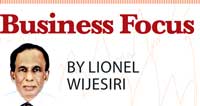14 Mar 2016 - {{hitsCtrl.values.hits}}

Business executives today are facing some of the most competitive market conditions in decades - a relentlessly tough economy, fierce price wars and a consumer trend towards online purchases. In this increasingly competitive world, ensuring a highly personalized customer experience is critical for marketers trying to differentiate themselves from the crowd. 
Opportunities
Each customer’s unique purchase cycle, needs, characteristics and behaviours present a wide range of customer interaction opportunities. These opportunities are tied to specific stages of the purchase cycle.
Your opportunities to communicate product features and benefits to a customer are significantly different when a customer is in a passive awareness mode compared to when a customer is actively making a purchase decision. Your opportunities to provide site personalization and customized service are much greater as your relationship with a customer strengthens.
Some interactions, such as a call to customer service or a visit to your website, are initiated by the customer. Others, such as outbound marketing communications and sales efforts, are initiated by you as the provider.
You may find that specific types of interactions lend themselves to direct channels and media; others may lend themselves to an indirect information-serving environment.
Some interactions are situation-driven or driven by a deeper understanding of customer needs and behaviours. An example would include sending information to prospective customers based on their request for information. An example of the latter would be recognizing a customer’s channel and media preferences and driving marketing efforts accordingly.
You should be able to itemize dozens, if not hundreds, of opportunities to interact. We give below some thought-starters by itemizing some of the potential areas of customer contact with your organisation.
Potential points of customer contact
Sales -- Point of service/sale, field sales, store personnel
Customer service/support -- Customer service, customer training, customer support, website support, service/repair department
Distribution -- Delivery personnel, ‘will call’ window, order processing, shipping/fulfilment
Staff functions -- Accounts receivable, credit department, collections, billing
Marketing communications -- Customer acquisition, customer retention, customer reactivation, general advertising, public relations
Therefore, it is critical to assess each of them based on – (a) their impact on customer satisfaction and value and on customer relationships, (b) feasibility of implementation and the extent of development work that would be required for improving each interaction and (c) related priority for development or improvement
The sum total of these interactions - those supported as well as those not supported - form the customer’s experience with your organisation. You may find that this experience is very positive for some of your customer segments, but less positive for others. This could be based on their needs, behaviours and preferences. Once you realize the extent to which you support and
enhance a customer’s experience, you can put a game plan in place to adjust your efforts accordingly.
The customer’s experience across all aspects of your organisation - whether it’s field sales, marketing, point-of-sale, call centre, website, customer care, advertising or public relations - drives customer satisfaction. Customer satisfaction can foster loyalty; in turn a customer’s loyalty forms the basis of a valuable relationship with your organisation.
Example
Suppose you are the CEO of a furniture manufacturing company. You have established a Customer Experience Committee.
Your company is convinced that the customer experience is key to its current and future success and this philosophy is reflected in the company’s mission: “to be the most successful furniture company in the country at delivering the best customer experience in markets we serve.”
You believe that building a great company isn’t about embracing catchy slogans that masquerade as strategy. It’s about rethinking the most basic relationship in business: the one between you and your customers.
How well do you meet their needs? How smoothly do you solve their problems? How quickly do you anticipate what they’ll want next? The real promise is a once-and-for-all transfer of power: Consumers and business customers will get what they want - when and how they want it and even at the price they want. Your chairman puts it this way: “The customer experience is our next competitive battleground.”
How do you as a respected maker of personal furniture in the industry define the customer experience? “It’s the sum total of the interactions that a customer will have with our company’s products, people and processes,” you would say. “It goes from the moment when customers see one of our ads to the moment when they accept delivery of the product - and beyond. Sure, we want people to think that our furniture is great. But what matters is the totality of customers’ experiences with us: talking with our call centre representatives, visiting our website, buying the furniture, owning a furniture. The customer experience reflects all of those interactions.”
Your company has formed the Customer Experience Committee, a group that is scrutinizing every aspect of how your company interacts with customers. According to the data collected, the company has more than 5000 “customer contacts” per week, whether in the form of e-mails, phone calls, deliveries, or returns. The challenge is how to monitor and measure the quality of those contacts.
“Most companies tell shareholders how they are doing every quarter,” says Chairman, who is also a member of the Customer Experience Committee. “But few companies have a set of metrics that measure the customer experience month to month, quarter to quarter. We are one of them. Our challenge is to instil a companywide commitment to the customer experience.” It’s like the way Disney teaches its people to be aggressively friendly: ‘Can I help you find something?’ Your metrics give you a read on the experience that you are delivering and on the loyalty that you are creating. You are doing pretty well, but still know you can do much better.
Getting closer
If you want to get closer to your customers – how can you achieve this? What should you focus on when developing new strategies for customer interaction? The following three points, while not exhaustive, can provide some guidance:
(1) Increase the number of available interaction points. (Consumers want to use multiple interaction points). (2) Make them as easy as possible for customers. They should be both current and prospective, to stay within your sphere of influence. (These interaction points should be branded consistently, present identical information and allow the user to switch interaction points without losing information already provided via other points of contact). (3) Improve interaction quality. The aspects of interaction quality – good advice, an adequate range of products matching actual consumer needs and finally fast and efficient service in the moment of truth – will strongly determine whether customers will use the particular interaction point again and, whether they will become advocates and recommend it to their peers. However, the multiplier works both ways – an interaction point of bad quality is worse than none at all if it creates
antagonistic consumers.
The key to succeeding with all of the above is flexibility and the smart use of analytics. The world has never been as complex and full of constant and rapid change as today – and the evolving preferences of tomorrow’s consumer are part of this complexity.
(Lionel Wijesiri, a corporate director with over 25 years’ senior managerial experience, can be contacted at [email protected])
26 Nov 2024 42 minute ago
26 Nov 2024 1 hours ago
26 Nov 2024 1 hours ago
26 Nov 2024 2 hours ago
26 Nov 2024 3 hours ago